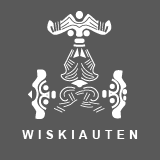History of research
As all archaeological sites in the Kaliningrad region Wiskiauten has a history of special research connected with the history of East Prussia.
Scientific excavations at the graveyard have already been carried out in German times since 1865. Until the beginning of World War II nearly 300 burial mounds have been examined, the exact number is unknown.
Due to the beginning of the war, research was interrupted. All finds and excavation reports (hand-written reports, drawings of the burials, fotos, the plan of the cemetery etc.) were stored or exhibited in the so-called Prussia-Museum in former Königsberg.
To prevent it from imminent destruction, all the material including the museum’s entire collection was hidden at several different places shortly before the war ended. For nearly 60 years the collection remained undiscovered in its secret hiding places and was presumed to be lost, among it the material of Wiskiauten.
It was not until the 1990s that parts of the legendary Prussia-collection reappeared (Reich 2002; Valujev 2005) and thus can be reviewed in the light of todays state of research.
Indeed, the Soviet and later Russian archaeologists carried out excavations at this important monument that helps to understand the Viking Age trading activities in the Baltic Region, but due to the political and historical circumstances both lines of research could not be combined.
Again, it was not until the 1990s that a cooperation was possible and is being practiced in a Russian-German research project since 2005.
[top]

